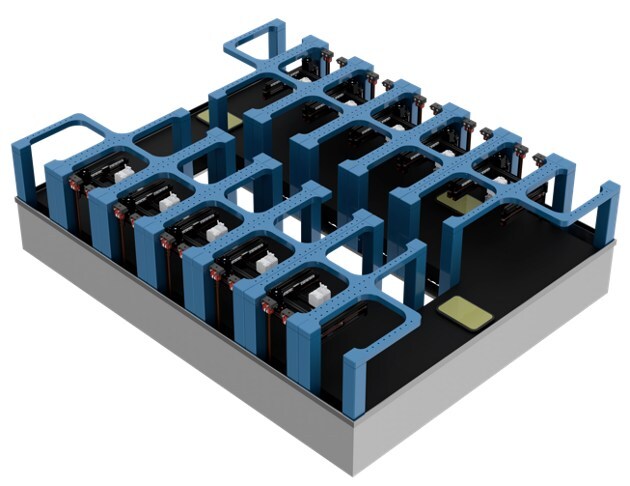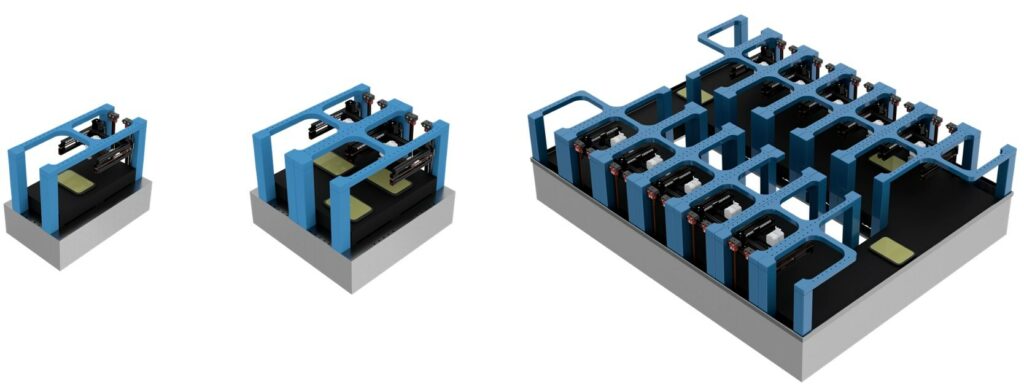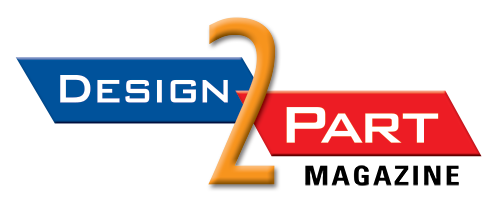
A large-scale setup of the modular Matrix6D production system from Advanced Printed Electronic Solutions.
Designed to support mass customization, the platform enables concurrent production of different parts and dynamic task allocation via orchestration software.
DETROIT—An adaptive additive-manufacturing (AM) platform developed by Advanced Printed Electronic Solutions (APES) is designed to solve one of the 3D printing industry’s most persistent challenges: scalable production beyond prototyping.
According to a release from APES, its Matrix6D platform is a highly flexible and modular platform that brings “a dynamic, reconfigurable, ‘swarm-based’ approach to 3D printing.” Instead of using fixed build platforms, Matrix6D deploys mobile, magnetically levitated build units that APES calls “mobile build platforms.” Each of the build units is orchestrated by software across configurable tool stations, the release stated.
The innovative platform, unveiled at the RAPID + TCT expo in April, is said to enable “unprecedented parallelization, workflow flexibility, tool options, and throughput in additive production.”
“Every customer we’ve worked with asks the same question: How do we scale 3D printing beyond prototyping? 6D is our answer,” said Rich Neill, CEO of APES, in a statement. “It’s a clean-sheet reimagining of the additive factory—adaptive, software-defined, and built for mass customization and true production volume.”
Adaptive additive manufacturing architecture
At the heart of Matrix6D is a grid-based, XY-configurable tool-cell architecture that allows an arbitrary number of tool stations to be arranged in a matrix topology. Each of these stations features different motion gantry options, which can be configured depending on the build volume and precision required.
Every cell is a mini manufacturing unit equipped with any combination of material deposition—including aerosol jet, inkjet, direct write, dispensing, or extrusion—and non-additive processes. Examples are curing/post-processing, pick-and-place robots, or other tools, such as vision systems for calibration and inspection. The mobile build platforms move autonomously from station to station via magnetic levitation, enabling complex, multi-step manufacturing processes without the spatial and functional constraints of traditional 3D printers, the company said in the release.

Various configurations of the Matrix6D adaptive 3D printing factory from Advanced Printed Electronic Solutions.
The Matrix6D platform is designed to support mass customization, concurrent production of different parts, and dynamic task allocation via orchestration software.
According to APES, each tool station uses machine vision or laser optics for self-calibration, ensuring micron-level precision even at scale. Matrix6D’s architecture is reported to support multiple classes of accuracy, from standard industrial-grade builds to high-resolution requirements needed for semiconductor packaging and advanced nano-fabrication capabilities.
Scalability and configurability
The highly modular design of Matrix6D is said to enable scaling from small benchtop units to full production lines of “unprecedented” additive manufacturing production throughput. It can accommodate varying toolhead sizes, tool station densities, and build volumes that are defined parametrically. Multiple manufacturing recipes can run in parallel, making it well-suited for applications in semiconductor and electronic device packaging, additively fabricated circuit boards, and metamaterial optics, the company said.
Although APES initially developed Matrix6D to meet the demands of additive electronics, the company sees the platform as having “far broader implications.”
“Its architecture is compatible with a variety of polymer-based processes, industrial automation applications, and is being adapted to integrate emerging technologies—including volumetric AM, which is being announced separately as part of a unique partnership,” the company said in the release. “Matrix6D represents not just a new machine, but a redefinition of how 3D printing can be deployed at scale to revolutionize additive manufactured electronics.”
Advanced Printed Electronic Solutions describes itself as a technology company that focuses on next-generation manufacturing solutions at the intersection of additive electronics, precision robotics, and adaptive software.
“With a background in application engineering and deep partnerships in advanced R&D, APES develops scalable systems and additively manufactured electronics applications for customers that turn additive manufacturing from a prototyping tool into a true production platform,” the company said in the release.
